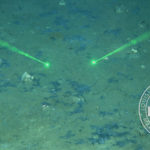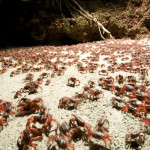View Larger Map
Tristan da Cuhna defines the statement “middle of nowhere” at 1500 miles from African and South American continents. A remote island group right in the middle of the Southern Atlantic Ocean would seem unlikely spot for an oil spill. But alas, we humans are a persistent species.
Nightingale Island is a biodiversity hotspot and holds the endemic, i.e. not found anywhere else, Northern Rockhopper Penguin. Several other species are also known to breed or take residence in the island group. This includes the Atlantic petrel that only breed among the islands of Tristan da Cuhna. Nightingale also supports important populations of Atlantic Yellow-Nosed Albatrosses and Sooty Albatrosses. As mentioned by Ocean Doctor the neighboring Inaccessible Island is a World Heritage Site.
On March 16th, the Greek-owned bulk carrier MS Oliva ran aground on 4-km² Nightingale Island on its way from Santos, Brazil, to Singapore with a cargo of Soya beans. By the end of the day on the 18th, the MS Oliva had broken in half spilling her 64,000 ton bean cargo and 1,400 tonnes of heavy crude. The last reports are that a 13km oil slick exists around the island and has now made it to Inaccessible Island.
“The scene at Nightingale is dreadful as there is an oil slick around the entire island,” said Trevor Glass, the Tristan Conservation Officer, in a statement. “The Tristan Conservation Team are doing all that they can to clean up the penguins that are currently coming ashore. It is a disaster.”
Of course another worry is the risk of rats on the vessel colonizing the island and placing the island’s seabird colonies in jeopardy.
A heart wrenching set of photographs and updates exist at the Tristan da Cuhna website.






We manage quite well to impact every last square kilometer don’t we….